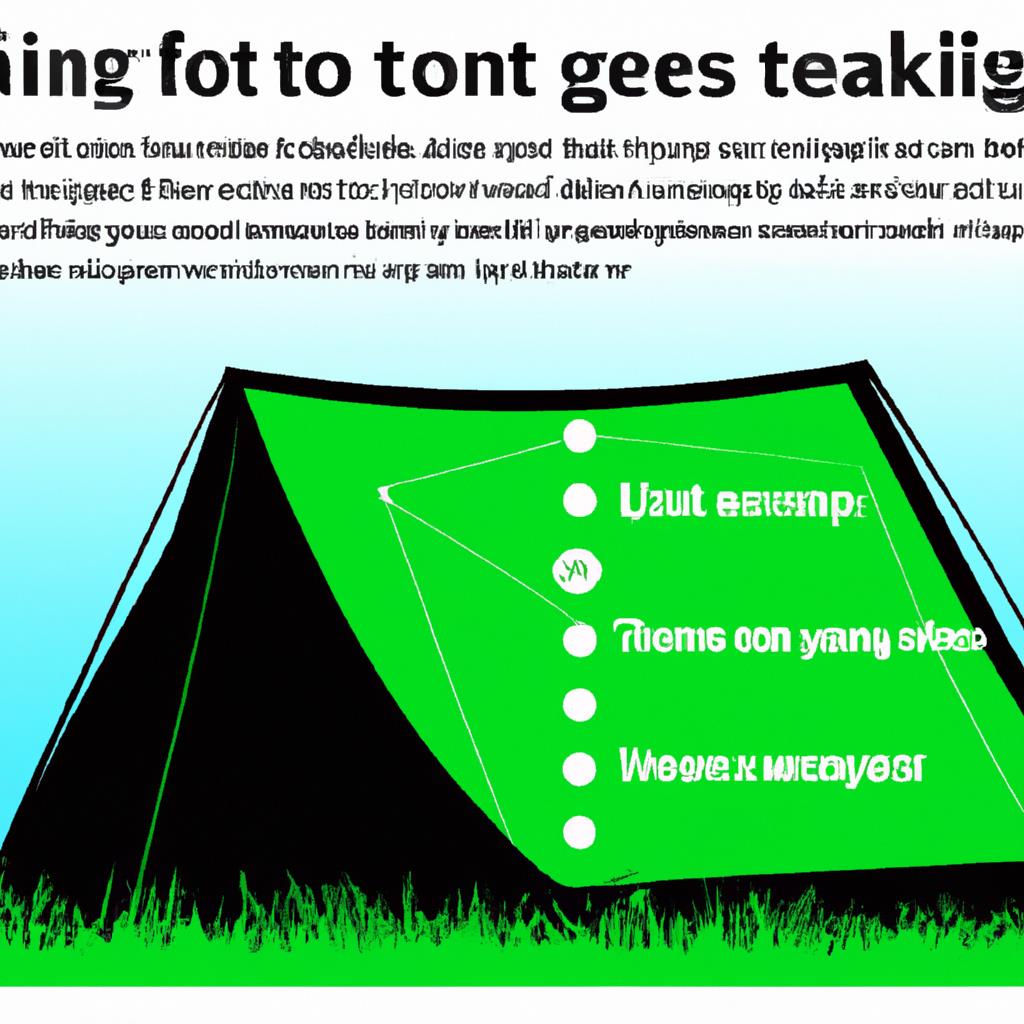Setting up a tent may seem like a straightforward task, but there are several common mistakes that campers make when pitching their tents. These mistakes can lead to a less enjoyable camping experience and even pose safety risks. To ensure that your tent is set up correctly, here are the top 10 mistakes to avoid when setting up your tent at a tenting and camping site:
1. Choosing the Wrong Campsite:
One of the most important factors in setting up your tent is choosing the right campsite. Avoid placing your tent on uneven ground or near water sources that could flood in case of rain. Look for a flat surface that is free of rocks, sticks, and other debris that could puncture your tent floor.
2. Not Arriving Early Enough:
Arriving at your campsite late in the day can make setting up your tent more challenging, especially if you are racing against the setting sun. Arrive at the campsite early to give yourself enough time to find the ideal spot and set up your tent before it gets dark.
3. Not Checking the Weather Forecast:
Failing to check the weather forecast before setting up your tent can lead to a miserable camping experience. Make sure to check the forecast for rain, wind, and extreme temperatures so that you can prepare accordingly.
4. Not Practicing Setting Up Your Tent Beforehand:
Setting up a tent for the first time can be tricky, especially if you are using a new tent or have little experience with camping. Practice setting up your tent in your backyard before your camping trip to familiarize yourself with the process and avoid making mistakes on the campsite.
5. Not Securing the Tent Properly:
One common mistake campers make is failing to properly secure their tents. Make sure to stake down all corners of your tent and use guylines to prevent it from blowing away in the wind. Additionally, use a ground tarp to protect the bottom of your tent from moisture and debris.
6. Overlooking Ventilation:
Proper ventilation is essential for a comfortable night's sleep in your tent. Make sure to open all vents and windows in your tent to allow airflow and prevent condensation from building up inside. This will help regulate the temperature and keep you from feeling stuffy during the night.
7. Not Using a Footprint:
A footprint is a ground tarp specifically designed to fit under your tent and protect it from abrasions and moisture. Using a footprint can greatly extend the life of your tent by preventing wear and tear on the bottom fabric. Make sure to invest in a quality footprint that is compatible with your tent model.
8. Ignoring the Tent's Instructions:
Many campers make the mistake of disregarding the instructions that come with their tent. These instructions contain valuable information on how to properly set up and care for your tent, so be sure to read them carefully before pitching your tent.
9. Not Packing the Right Gear:
Another common mistake campers make is not packing the right gear for their camping trip. Make sure to bring all necessary equipment, such as a hammer for staking down your tent, a repair kit for quick fixes, and extra stakes and guylines in case of emergencies.
10. Leaving Food and Trash Inside the Tent:
Leaving food and trash inside your tent can attract unwanted pests, such as insects and animals, that can damage your tent and pose safety risks. Make sure to keep all food and trash outside of your tent in secure containers to prevent these issues.
Avoiding these common mistakes when setting up your tent at a tenting and camping site will help ensure a safe and enjoyable camping experience. By taking the time to properly prepare and set up your tent, you can make the most of your time in the great outdoors.


leave a comment